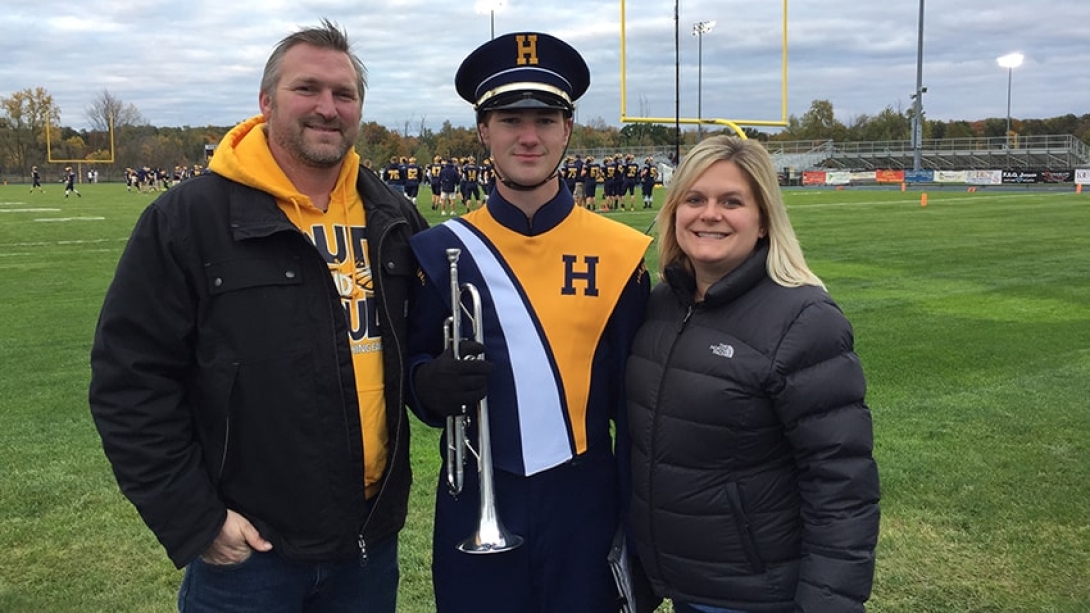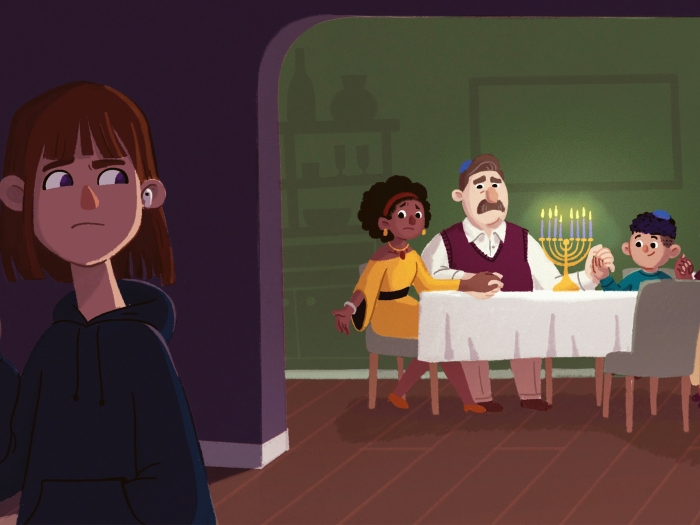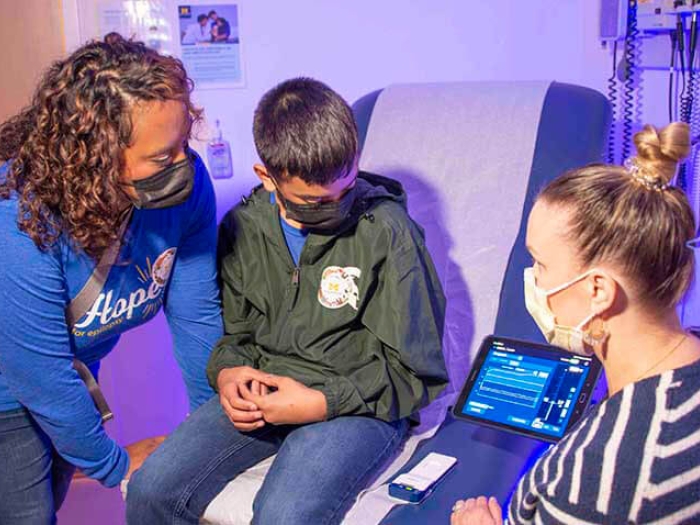A daring liver procedure saved a child’s life after a near-fatal motorbike accident. He’s the only patient in the world known to have survived this type of surgery.
7:00 AM
Author |
Minutes after his motorbike collided head-on into his brother's vehicle while riding through a corn field six years ago, Max Bontekoe was standing, walking and talking.
But internally, the 12-year-old was bleeding to death.
MORE FROM MICHIGAN: Sign up for our weekly newsletter
Results of a CT scan at a local hospital prompted doctors to order that the seventh-grader be airlifted to University of Michigan C.S. Mott Children's Hospital.
When Mott surgical team members led by Ronald Hirschl, M.D., began what they figured would be surgery for a ruptured spleen, they discovered something much worse: Max's liver was nearly detached from his body, with two of the three veins torn off and the third partially torn.
"It was a surgeon's nightmare," Hirschl recalls.
Max was rapidly losing blood, and all methods — including clamping off the aorta to slow bleeding — were unsuccessful. Meanwhile, the blood bank was low on blood.
Hirschl proposed a radical idea to save Max's life.
"We would have to remove the liver entirely, repair the veins and then put the organ back into his body," Hirschl says. "It had been done but with limited success."
That might be an understatement. Only two other patients in the world are known to have survived the high-risk procedure; each lived for only a few days afterward.
It was a delicate gamble. If surgeons couldn't preserve the liver and fix the injuries, Max would not survive.
'Our only option'
Hirschl contacted Shawn Pelletier, M.D., then the director of Michigan Medicine's liver transplant program. Pelletier was familiar with removing livers but had only done so via carefully planned operations. This time, the surgeon was going in blind.
Still, he agreed.
SEE ALSO: 'Superhero' Brothers Bonded by Rare XMEN Disease
"You think of what you would want doctors to do if this were your child," Hirschl says. "We acknowledged this was incredibly risky, but taking the liver out was our only option left to save this young man."
Removing the liver, the largest internal organ, allowed surgeons more room to work and better see what needed to be stitched and repaired underneath. Once they were finished, they reconnected his liver.
The procedure took more than 10 hours, 50 units of donated blood and the involvement of multiple care teams across specialties.
Luckily, the outcome was good.
"I am very fortunate to be alive," Max says. "The idea that I am the only survivor of (this procedure) is amazing. I am grateful to Dr. Hirschl and his team for thinking differently than other surgeons might."
Onward and upward
After his initial surgery in August 2011, the struggle wasn't over. Max spent 187 more days at Mott, including four months in the intensive care unit and two months in rehabilitation.
He also needed more than 30 procedures to help him heal from his initial surgery and an additional 50 to 60 units of blood throughout his stay. Bedside tutoring helped him keep up with school.
Today, there are few signs of his close call.
"He's 100 percent," says his father, Jacob. "It's pretty incredible."
Max went on to play trumpet in the band, work on his family's 1,000-acre dairy farm and enjoy leisure activities like running, swimming and restoring old cars.

Max, now 18, graduated this spring with a 3.45 GPA from Hartland High School in Hartland, Michigan, and is preparing to start college at Kettering University in Flint. He plans to pursue an engineering career.
But his father and stepmother, Elizabeth, still think back to that "surreal" moment when they weren't sure Max would have those opportunities.
Jacob vividly remembers the phone call from one of Max's friends, learning that his sons had collided while racing on their dirt bikes.
Despite visible tire tracks across Max's chest and complaints of pain, the internal damage remained unseen.
"No one could have guessed how bad it was," Jacob says. "When I saw him standing there, he seemed fine. Just a couple of scrapes and no signs of any broken bones. We didn't know the extent of it.
"We never could have imagined that a surgery no one else had survived before would end up saving his life."
Once at Mott, however, it became clear that Max had an uphill battle.
"It was like a bad dream," Jacob says. "There were some pretty tense moments there of us pacing the hospital hallways not knowing whether he would make it or not. To think what they did for him ... it's just unbelievable that they kept going and doing everything they could think of to save him."
The family continues to praise the medical team's innovative care.
"Because they were willing to think outside the box, Max got to live to be a regular kid and now we're moving him to college," Jacob says. "We know if he had gone to any other hospital, he would not be here today."

Explore a variety of healthcare news & stories by visiting the Health Lab home page for more articles.

Department of Communication at Michigan Medicine
Want top health & research news weekly? Sign up for Health Lab’s newsletters today!





